‘Loewe Baskets’: two masters of bamboo take star turns at Milan Design Week
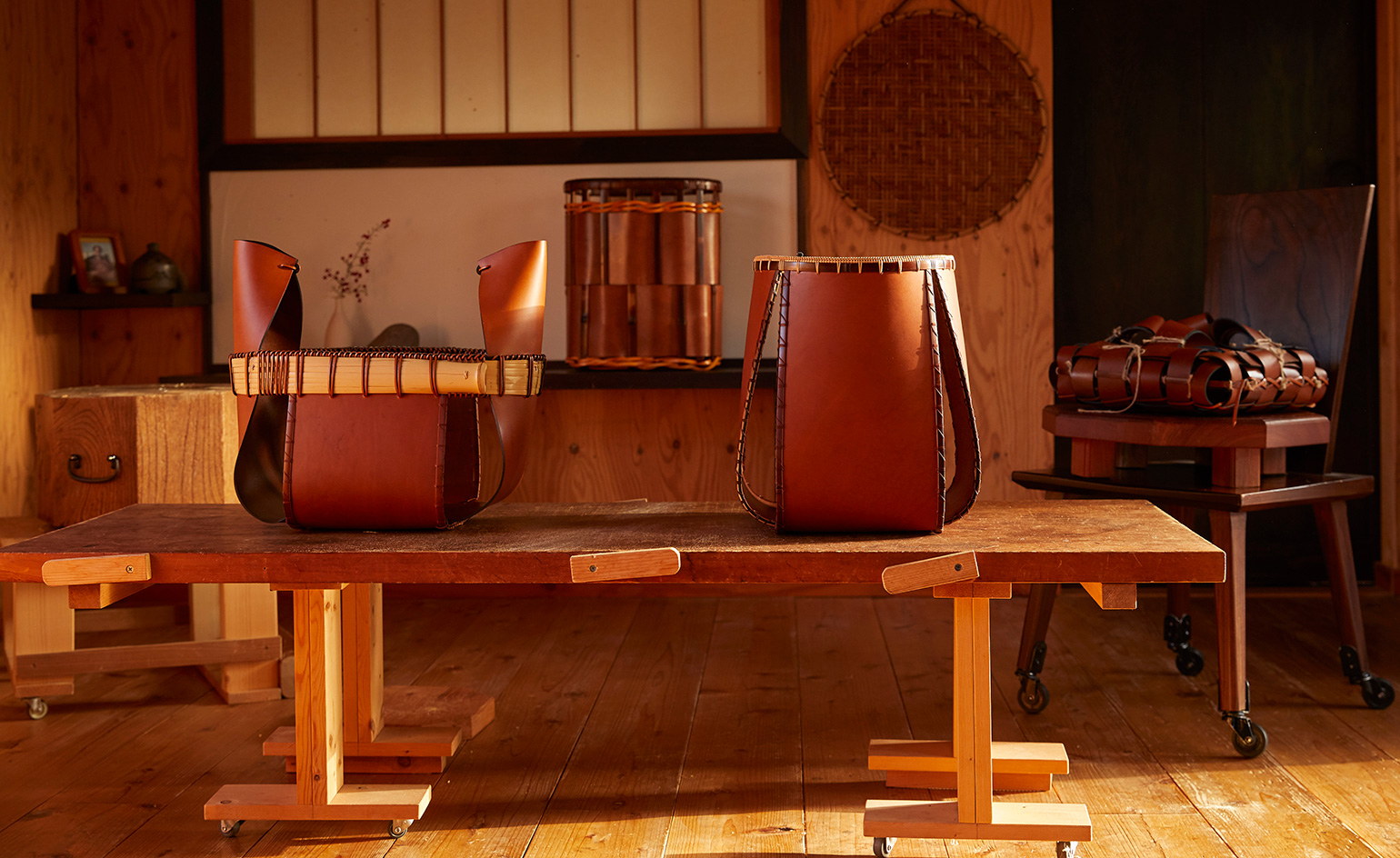
Returning to Milan Design Week for the fifth year running, Spanish luxury brand Loewe is exploring worldwide traditions of basketry, using its signature leather to elevate the likes of woven containers from South African collective Design Afrika, and baskets made from homegrown willow by Irish craftsman Joe Hogan. Among the 11-strong roster of talents are two of Japan’s foremost bamboo artists, Jiro Yonezawa and Hafu Matsumoto. They have been asked to swap their usual strips of bamboo for natural dyed Loewe leather, and see just where their creativity takes them. The resulting seven pieces are an exquisite marriage of technique and material.
Yonezawa’s three pieces are cocoons of leather interwoven with almost white strips of thin bamboo into various ornamental shapes. The twisting and turning kamakiri (Japanese for mantis) stands out for its organic shape, but his jizo, mimicking the small stone bodhisattva statues found throughout all of Japan and kaseki (fossil), a large softly curving stone-shape, are just as beautifully executed. ‘Unlike bamboo, leather is very soft and pliable, so I made cores from Styrofoam, wood and paper for integrity,’ he explains. All three pieces are snugly woven around these cores, giving the pieces a sculptural quality not usually associated with any weaving technique.
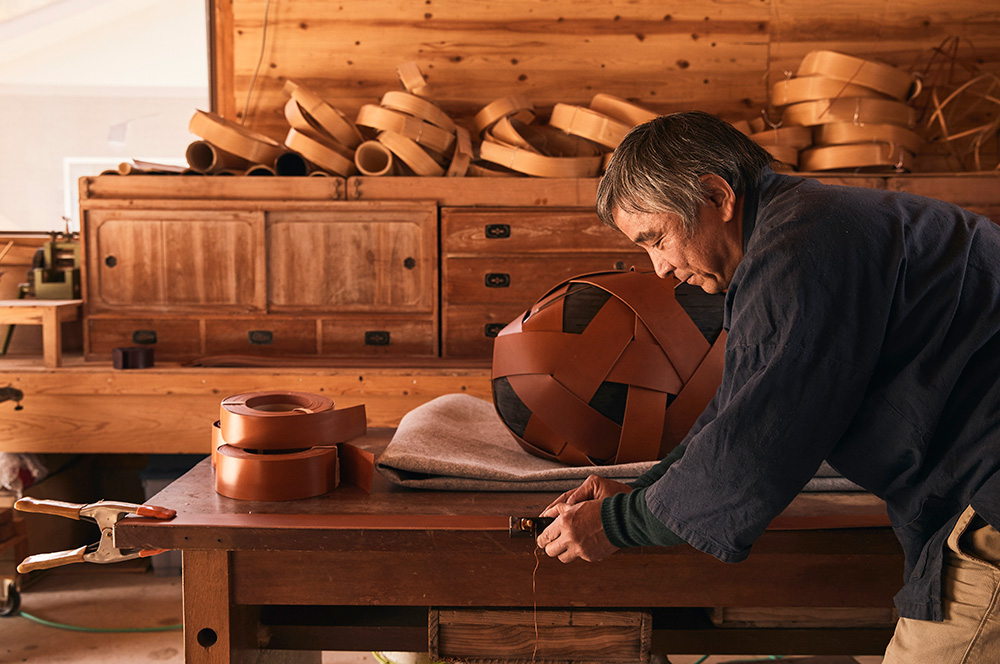
Jiro Yonezawa crafting Kaseki.
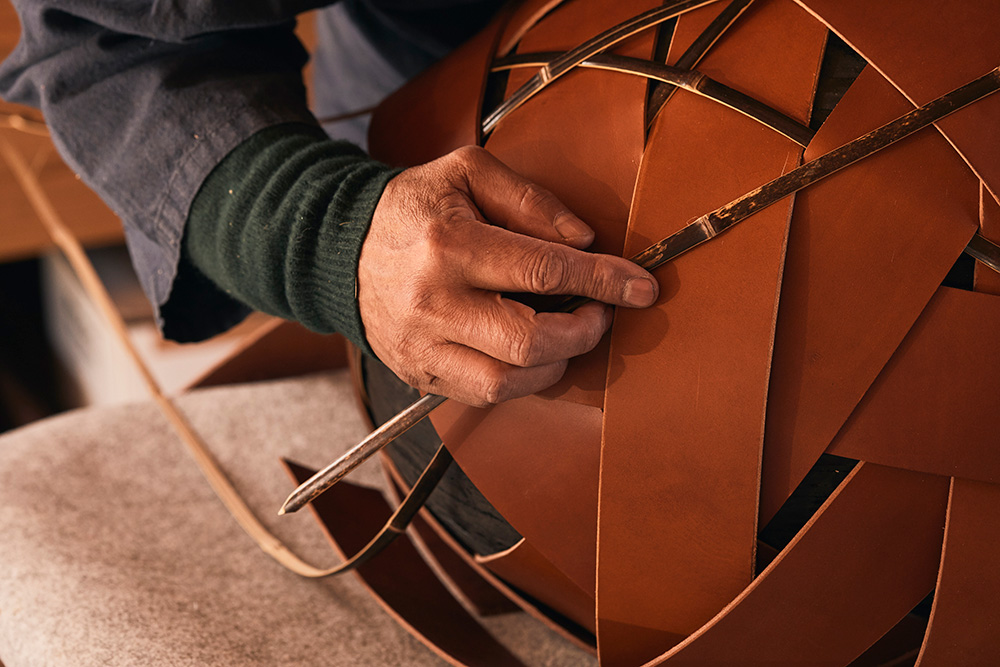
In his early twenties, Yonezawa lived next to a small bamboo forest and often thought he would one day like to make something out of the beautiful, tall bamboo. At 24, he spent a year at the Beppu vocational arts training centre learning the basics of traditional bamboo weaving, and then trained under master craftsman Masakazu Ono. After nearly two decades in the United States, he is now based in Saiki in the north of Kyushu, Japan.
Hafu Matsumoto, meanwhile took a more circuitous path to basketry. He aspired to become a photographer before he met and trained under Iizuka Shōkansai, a bamboo weaving genius and living national treasure of Japan. Matsumoto is now known for his mastery of the noshitake technique, which involves flattering whole pieces of bamboo into wide strips, heating them in warm water, and then twisting them into organic shapes. He has exhibited internationally, including at Ippodo Gallery in New York, where his work caught the attention of Loewe creative director Jonathan Anderson.
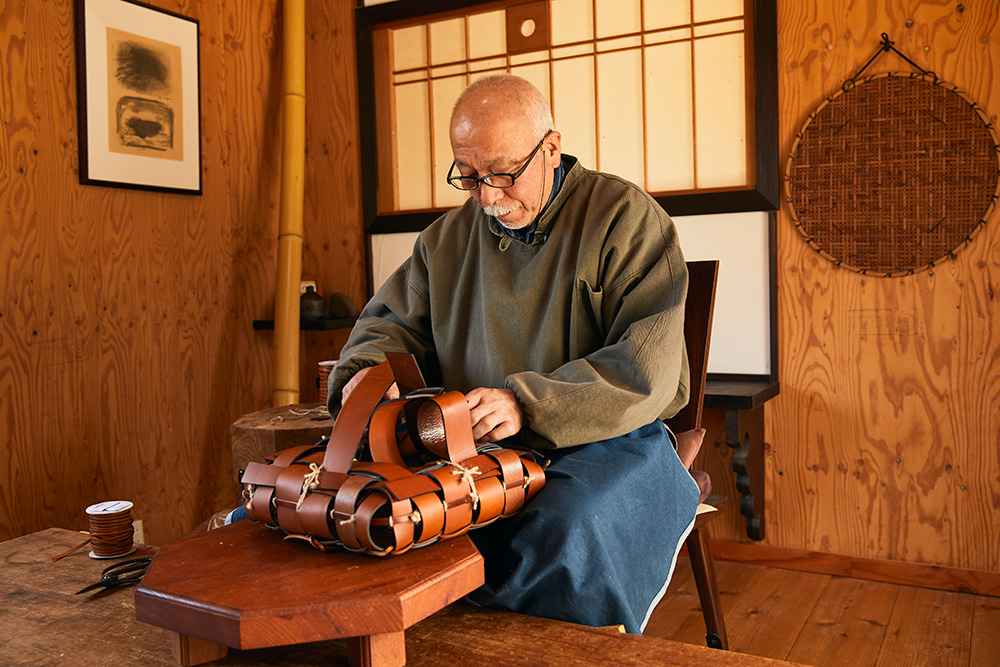
Hafu Matsumoto working on Creel.
Matsumoto’s contribution to Loewe’s collection takes the form of four spectacular baskets made of wide strips of leather and varying kinds of bamboo. ‘It was my first time working with leather, but I am used to working with wide strips of bamboo so, the actual weaving process wasn't that much different,’ Matsumoto explains. Like Yonezawa, he has used bamboo to structure and reinforce his pieces, but it is the leather that plays the leading role. His four pieces employ bamboo differently and vary in their expression, but his masterly integration of the two materials and superior technique are bound to make his baskets one of the main attractions when the ‘Loewe Baskets’ exhibition opens in Milan on 9 April.
INFORMATION
‘Loewe Baskets’ is on view from 9-14 April. For more information, see the May 2019 Salone Preview issue of Wallpaper* and visit the Loewe website
ADDRESS
Montenapoleone 21
Wallpaper* Newsletter
Receive our daily digest of inspiration, escapism and design stories from around the world direct to your inbox.
Milan
Originally from Denmark, Jens H. Jensen has been calling Japan his home for almost two decades. Since 2014 he has worked with Wallpaper* as the Japan Editor. His main interests are architecture, crafts and design. Besides writing and editing, he consults numerous business in Japan and beyond and designs and build retail, residential and moving (read: vans) interiors.
-
 Eight designers to know from Rossana Orlandi Gallery’s Milan Design Week 2025 exhibition
Eight designers to know from Rossana Orlandi Gallery’s Milan Design Week 2025 exhibitionWallpaper’s highlights from the mega-exhibition at Rossana Orlandi Gallery include some of the most compelling names in design today
By Anna Solomon
-
 Nikos Koulis brings a cool wearability to high jewellery
Nikos Koulis brings a cool wearability to high jewelleryNikos Koulis experiments with unusual diamond cuts and modern materials in a new collection, ‘Wish’
By Hannah Silver
-
 A Xingfa cement factory’s reimagining breathes new life into an abandoned industrial site
A Xingfa cement factory’s reimagining breathes new life into an abandoned industrial siteWe tour the Xingfa cement factory in China, where a redesign by landscape specialist SWA Group completely transforms an old industrial site into a lush park
By Daven Wu
-
 Eight designers to know from Rossana Orlandi Gallery’s Milan Design Week 2025 exhibition
Eight designers to know from Rossana Orlandi Gallery’s Milan Design Week 2025 exhibitionWallpaper’s highlights from the mega-exhibition at Rossana Orlandi Gallery include some of the most compelling names in design today
By Anna Solomon
-
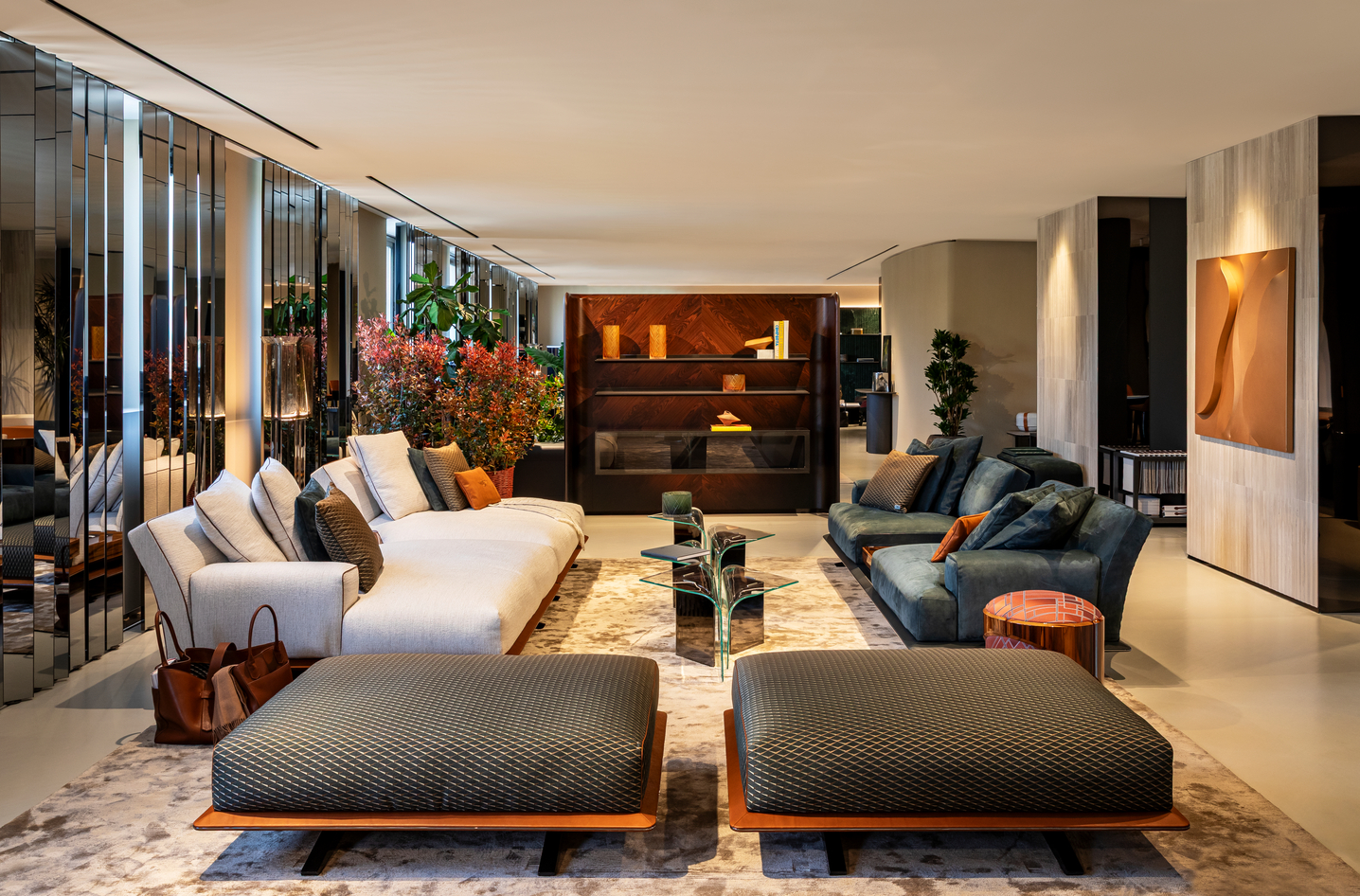 Bentley’s new home collections bring the ‘potency’ of its cars to Milan Design Week
Bentley’s new home collections bring the ‘potency’ of its cars to Milan Design WeekNew furniture, accessories and picnic pieces from Bentley Home take cues from the bold lines and smooth curves of Bentley Motors
By Anna Solomon
-
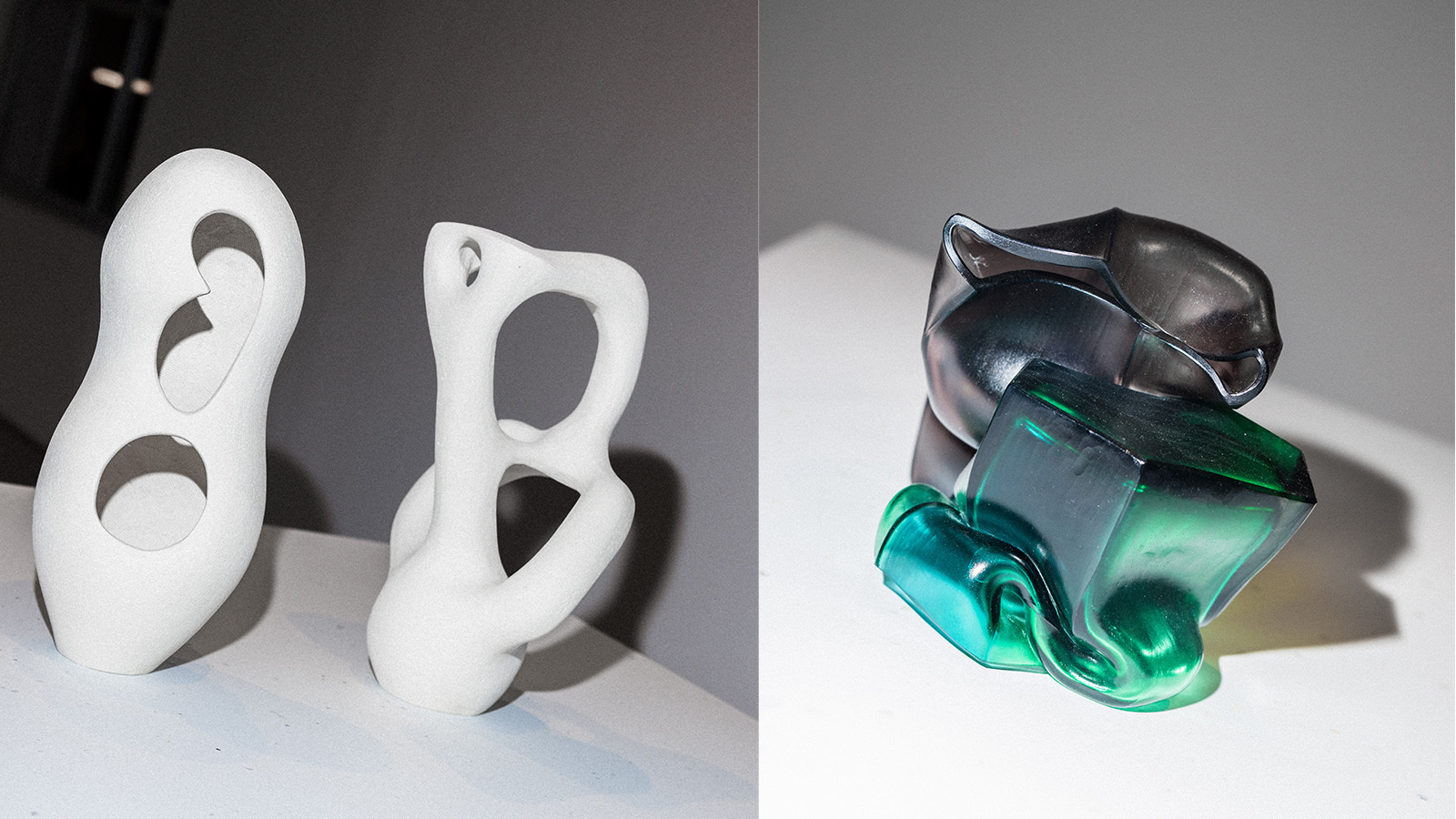 StoneX partners with Wallpaper* for material alchemy at Milan Design Week and beyond
StoneX partners with Wallpaper* for material alchemy at Milan Design Week and beyondThe natural stone purveyor teams up with Wallpaper* for a three-year partnership of material adventures, starting with an exhibition at Triennale di Milano
By Simon Mills
-
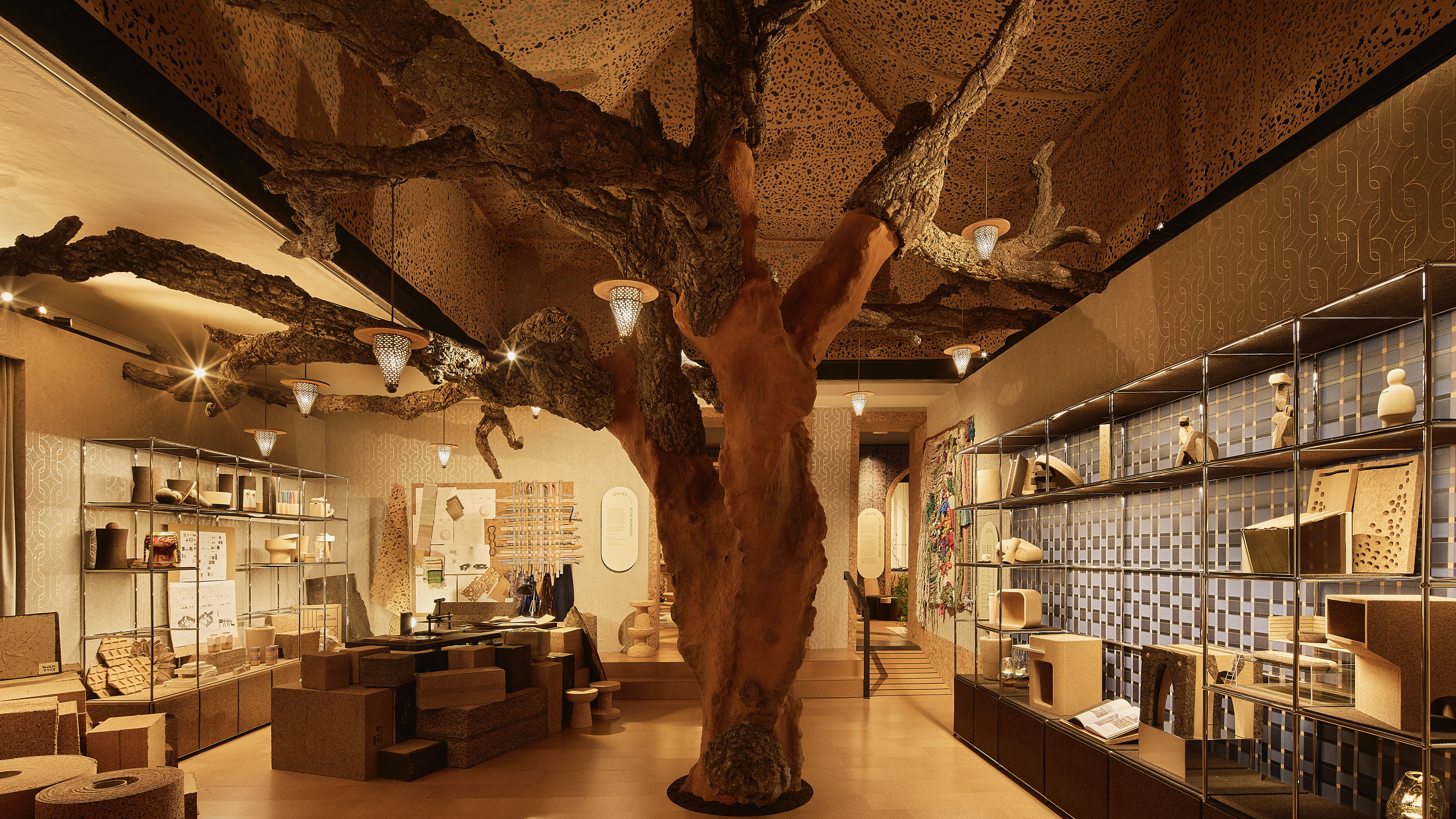 David Rockwell’s Milan Design Week presentation is a love letter to cork
David Rockwell’s Milan Design Week presentation is a love letter to corkRockwell Group’s Casa Cork installation showcases this under-appreciated material, which is infinitely recyclable and sequesters carbon for decades
By Anna Solomon
-
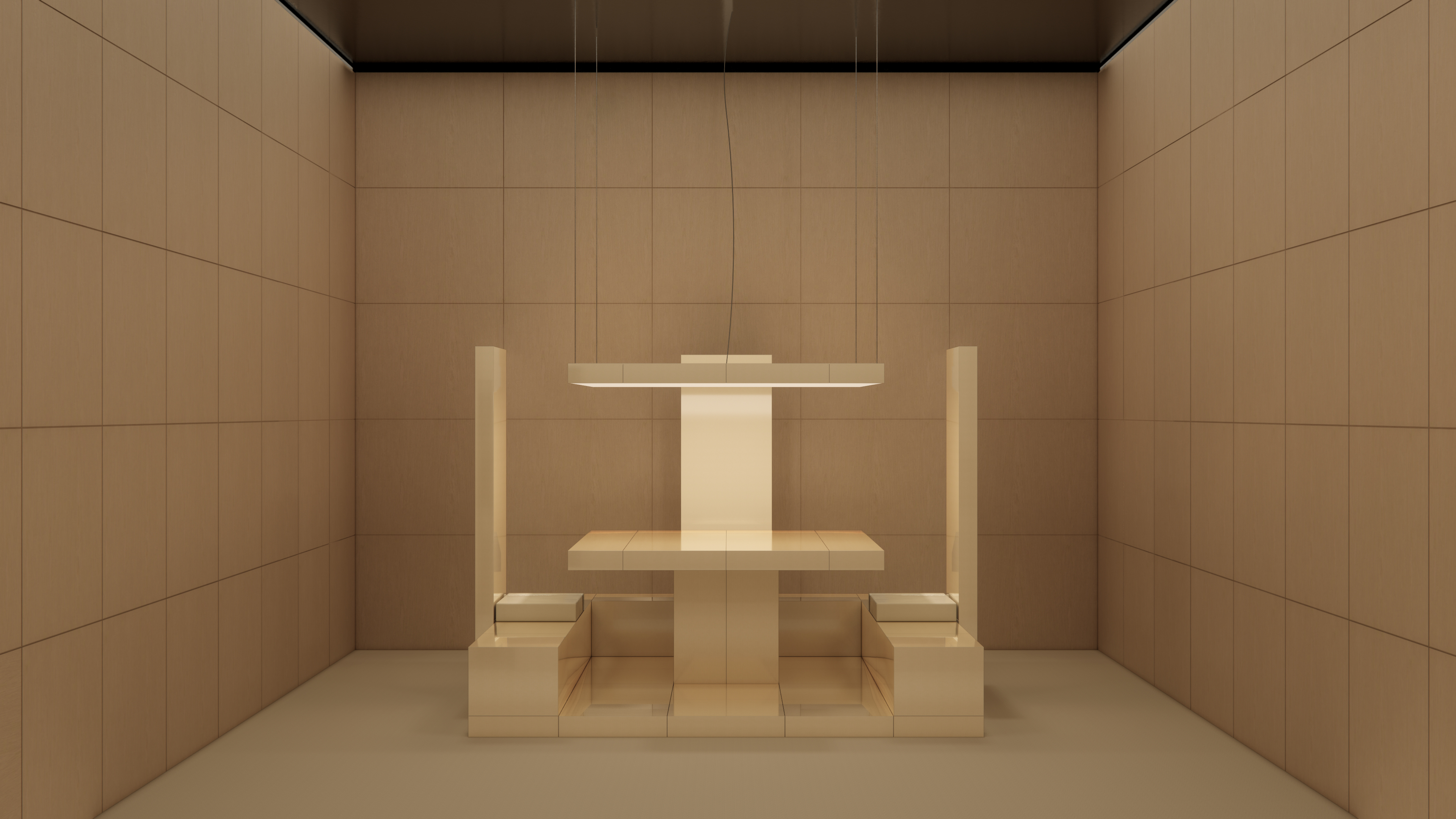 Emerging galleries to discover during Milan Design Week
Emerging galleries to discover during Milan Design WeekWallpaper’s Milan editor has the inside track on the younger design galleries coming to town
By Laura May Todd
-
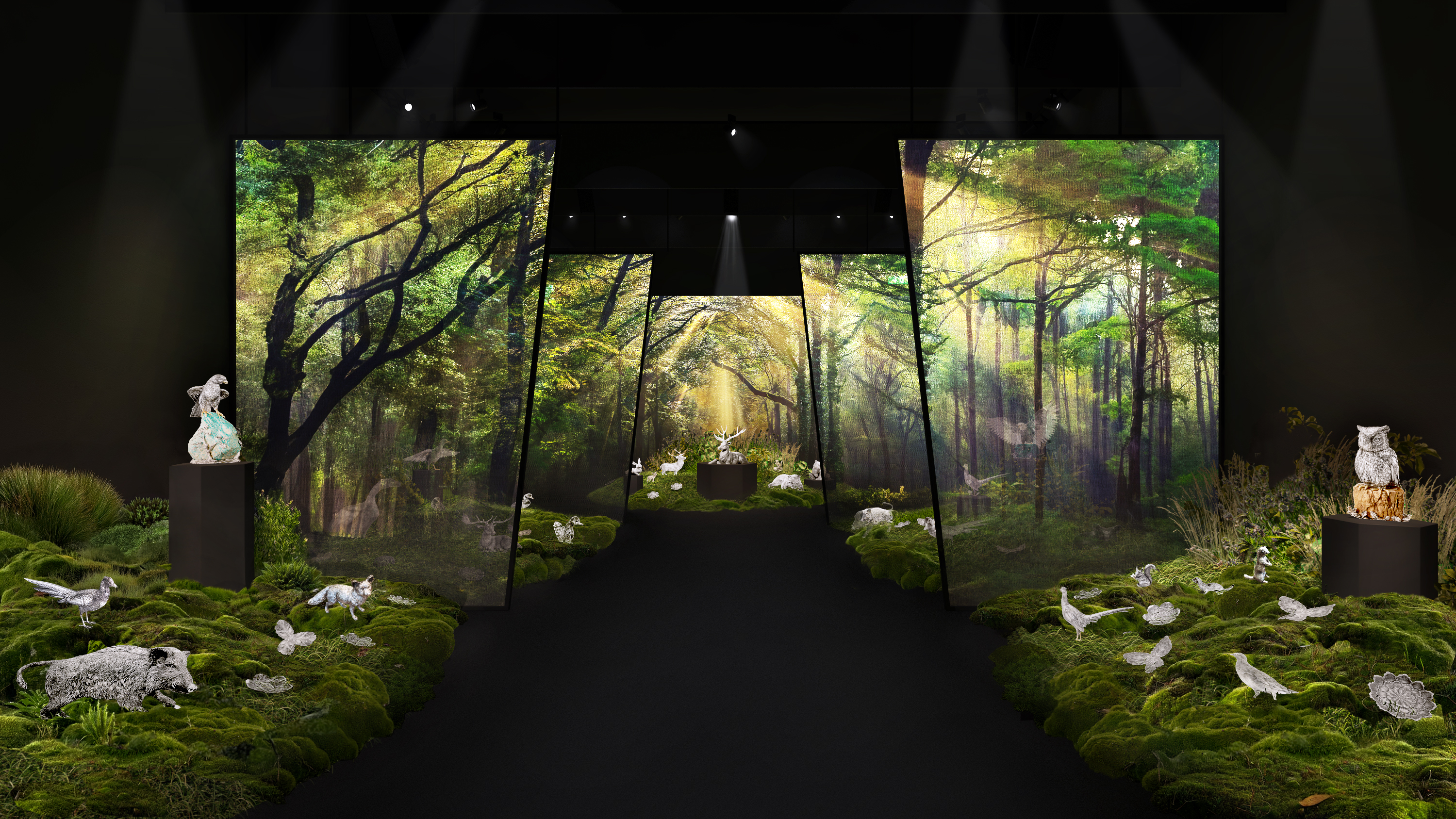 Buccellati brings the forest and Furry Animals to Milan Design Week
Buccellati brings the forest and Furry Animals to Milan Design WeekThe jewellery and silverware maison falls back on tradition for its Milan showcase, presenting its now-emblematic collection of intricately crafted creatures
By Laura May Todd
-
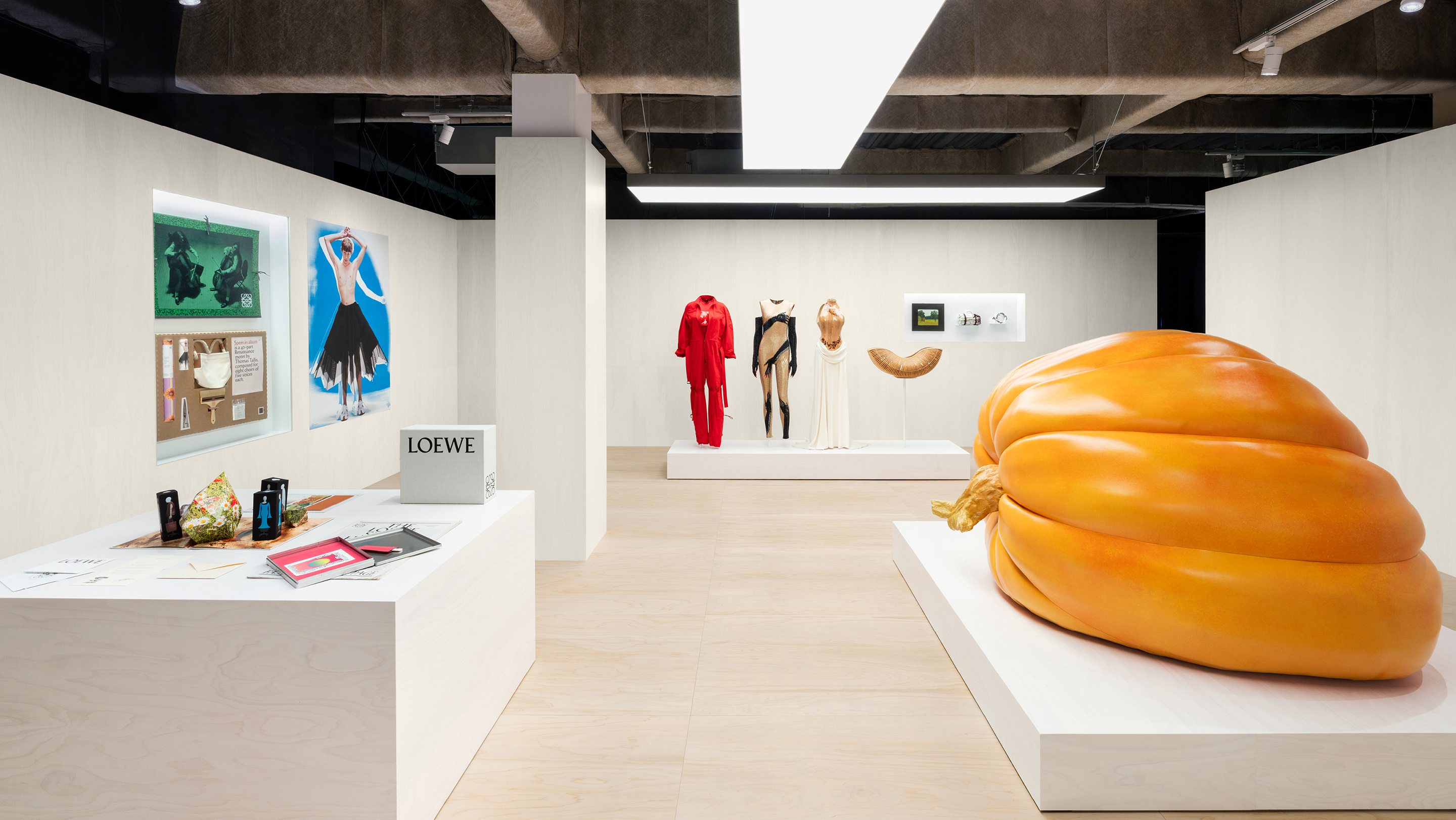 Paper flower gardens and neon mushrooms, Loewe's 'Crafted World' is rooted in heritage, innovation, and child-like wonder
Paper flower gardens and neon mushrooms, Loewe's 'Crafted World' is rooted in heritage, innovation, and child-like wonder'Crafted World' by Loewe is fashion house's first major brand exhibition, opening in Tokyo’s Harajuku district
By Danielle Demetriou
-
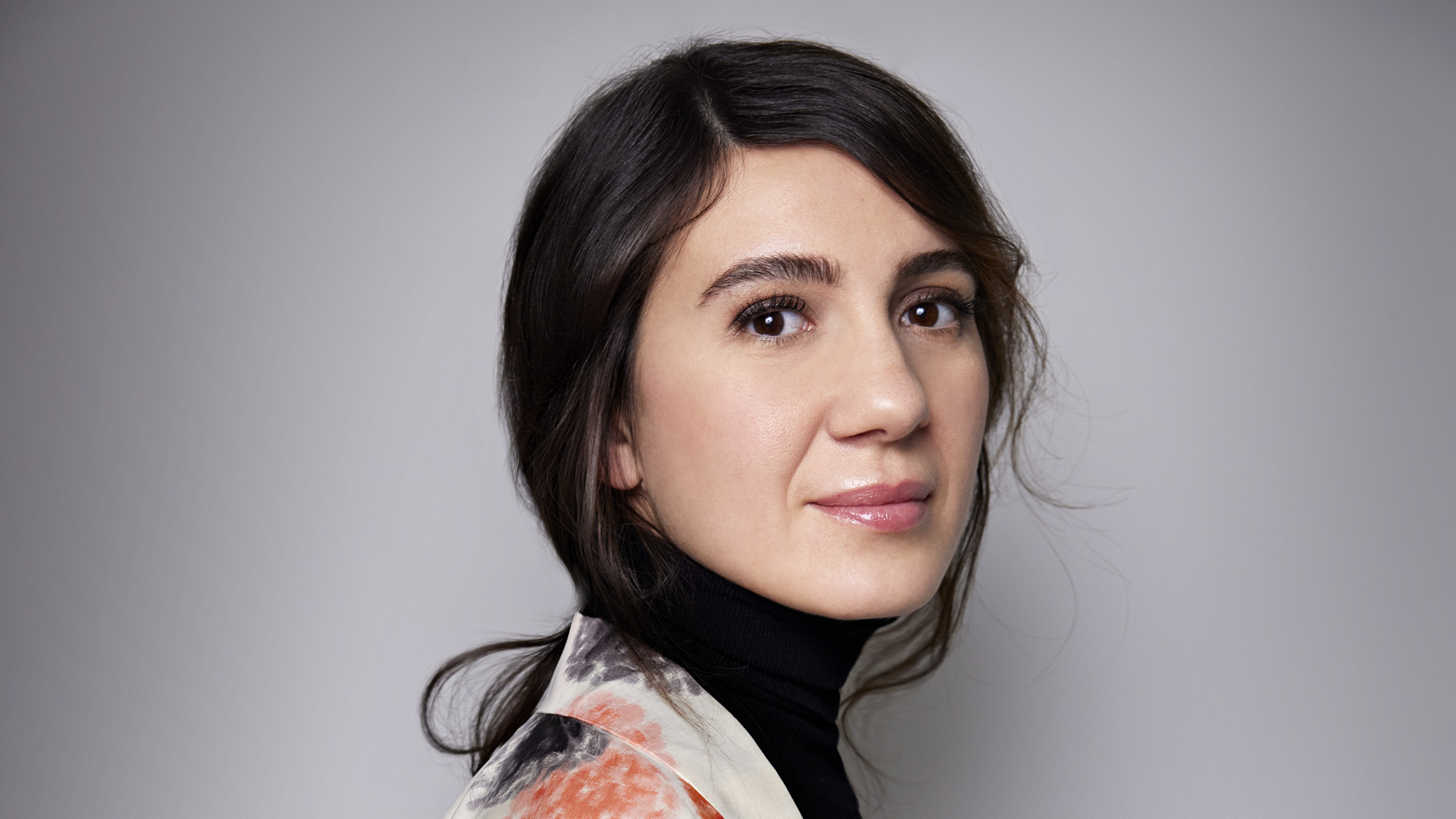 Where next for Salone del Mobile? Maria Porro on the future of the world’s biggest furniture fair
Where next for Salone del Mobile? Maria Porro on the future of the world’s biggest furniture fairAhead of Salone del Mobile 2025 in Milan, we sit down with its president to talk design, data and forging the event’s future in a fast-changing world
By Hugo Macdonald